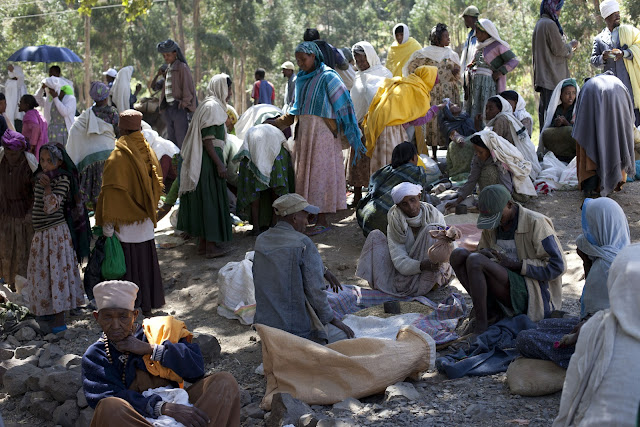Friday, November 30, 2012
Music
Mabel Watson Payne on a rainy Friday afternoon, holding the olden-days blue plastic CD-player I use (while commuting on MUNI) for listening to opera with my treasured Bose headphones (which nevertheless Mabel is of course welcome to play with absolutely anytime). She was curious about how all the pieces fitted together and how the sound came through the headphones right into her ears. But she asked me to turn the volume down almost to a whisper, otherwise it seemed too loud to her.
Labels:
blue,
children,
granddaughter,
MUNI,
music,
opera,
rain,
San Francisco,
winter
Garofalo
Annunciation, 1528
Adoration of the Magi, 1509
Madonna and Child with Saints Michael and Joseph, 1530-32
Saint Michael, Archangel (detail of painting above)
Madonna and Child, 1512-13
Circumcision of Christ, 1519
Madonna in Glory, c.1525
Baptism of Christ, 1520-25
The Entombment, c. 1520
Benvenuto Tisi (1481-1559) came to be remembered as Il Garofalo from his habit of marking paintings with a clover-symbol. He lived and worked in Ferrara, with rare visits to Rome. Orthodox religious crowd-scenes for church-display filled most of his career. When Garofalo wandered into the territory of classical mythology (as in Hercules below) his strength faltered.
Apotheosis of Hercules, 1539
Thursday, November 29, 2012
Žižek
In October the Times Literary Supplement ran Steven Connor's review of Slavoj Žižek's Less Than Nothing. The book was published last May, over a thousand pages long. In October, while Steven Connor's review was being distributed, Žižek was publishing his next book. He is the Joyce Carol Oates of political philosophy.
In one short paragraph, Steven Connor explained Žižek's special appeal (his special pointlessness) better than I ever managed to do.
"Although Žižek gives us plenty of pseudo-reasons for revolutionary change, it is plain that he can only keep up for short sprints his alleged outrage at the exploitation, brutality and misery that are all he will associate with capitalism. The real impulse to revolution is not to put any of this right, but to effect the joyous, violent emergence of the radically new, beyond any kind of prediction, likelihood or drearily utilitarian weighing of consequences. In this, Žižek may be said to adhere to a wholly formalist theory of revolution, which must be kept vigilantly void of any content save its own vehemence. What revolution is for, is not to usher in utopia, but to keep the dialectic alive."
Wednesday, November 28, 2012
Lands End Lookout
After the Cliff House brunch Mabel Watson Payne wanted to go exploring. Near the top of the curving sidewalk we discovered the newly opened Lands End Lookout. It provided Mabel with opportunities to clamber up, over and around all sorts of things.
The animals are concrete casts of original 19th century sculptures.
Eventually the sun did break through the fog, which meant that Mabel didn't really need her heavy pink coat anymore.
Mabel picked the little white weed-flowers growing along the picket fence and then brought them to me to put into my buttonhole.
In the picture immediately above, Mabel is instructing me to put the camera away and come and hold her free hand instead. Which of course is what I did.
Labels:
animals,
architecture,
daughter,
families,
fathers,
fences,
flowers,
fog,
granddaughter,
Pacific Ocean,
pink,
San Francisco,
sculpture
Tuesday, November 27, 2012
Peep Holes
It seemed like the sun might be thinking about coming out about the time brunch at the Cliff House had been polished off late Sunday morning, Mabel Watson Payne needed a chance to run around and do some exploring.
She found a fence with a knocked-out knot-hole just at her level, This was convenient because the fence was low enough for grown-ups to see over but tall enough for little children not to see over at all.
The view to be seen (by the toddler community) through the knot hole included the famous Cliff House rocks below, coated with the dung of many seabirds over the centuries.
She found a fence with a knocked-out knot-hole just at her level, This was convenient because the fence was low enough for grown-ups to see over but tall enough for little children not to see over at all.
The view to be seen (by the toddler community) through the knot hole included the famous Cliff House rocks below, coated with the dung of many seabirds over the centuries.
Labels:
daughter,
families,
fathers,
fences,
fog,
granddaughter,
grandmothers,
Pacific Ocean,
pink,
San Francisco,
views,
winter
Monday, November 26, 2012
Cliff House in Color
Sunday brunch with Mabel Watson Payne, just returned from the holiday journey with her parents to see her dear East Coast grandmother.
Labels:
autumn,
families,
fashion,
festivals,
granddaughter,
grandmothers,
restaurants,
San Francisco,
travel,
winter
Neue Welt
Neue Welt is the title of the current show at Kunsthalle Zurich. These very big photographic prints are the recent work of Wolfgang Tillmans, another of the numerous important contemporary German artists whose merits I do not tire of promoting.
Subscribe to:
Posts (Atom)




















